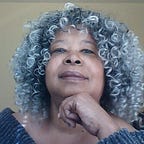Buried History: Unearthing the “Red” Roots of Blues, Jazz and Rock
“When people hear the traditional music of the American south, they say, ‘That’s Indian music? I thought that was African music…” Pura Fe, musician and indigenous music historian
That quote up there makes me smile. We’re part “Black Creek” on my mother’s side. That means some of our African ancestors ran off to live with the Creek Indians at some point — we don’t know the particulars.
It doesn’t mean we have Creek blood, though, a fact that upsets some of my relations when I say it. But I does mean some of us lived with them. And we’re a perfect example of how those cultures, and their music, mixed.
As a kid I always wondered why my mother, in particular, had such a deep love of what we used to call “gut bucket” blues. And then a friend sent me a CD full of Creek Stomp Dance music, and there was blues all through the call and response, cadences and melodies.
In a wonderful Jim Farber piece in today’s Guardian, Catherine Bainbridge, the director of Rumble: The Indians Who Rocked the World, (New York opening, July 26) admits that “without African American people, there would be no blues and no jazz.”
“They’re the center of it,” she explains. “But their experience in America was mixed with the influence of the indigenous people.”
There are lots of mainstream artists who have or have claimed indigenous bloodlines, like Jimi Hendrix, Robbie Robertson, Hank Williams and Loretta Lynn. Even Beyonce, in her famous and controversial make up ad, claimed to be part Cherokee.
But few of us realize that seminal rockers like Link Wray of “Rumble” fame and a host of others like Jesse Ed Davis, who played alongside George Harrison in the legendary concert for Bangladesh, and the Neville Brothers (Choctaw) also have indigenous roots.
Bluesman Charlie Patton (to whom our family also may be related) was part Choctaw. The “queen of swing,” Mildred Bailey, grew up on the Coeur d’Alene rez. The influence is unmistakable to those who know what to look for. And, sadly, largely unacknowledged.
Now, there’s a movie about it. Finally.
And there’s more, and thanks to the Guardian for this, too — I’ll just quote it so I don’t miss anything:
In 2014, the label Light in the Attic Records issued Native North America Vol 1, which collected the classic work of indigenous rock and folk songwriters in Canada and the northern US. In 2018, the label will issue a second volume, and this month the label will also re-issue Link Wray’s three solo albums from the early 70s. At the same time, Real Gone Music has just released a compilation of Jesse Ed Davis’s best recordings from his early 70s solo albums, while Redbone has put out a fresh retrospective.
That’ll keep you busy! “Go know,” as they say.
Go now.
Author’s note: Did you enjoy the read? Please click the 💚 below and thanks for your support
Photo credit: By Dxede5x (Own work) [CC BY 3.0 (http://creativecommons.org/licenses/by/3.0)], via Wikimedia Commons
